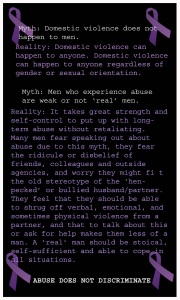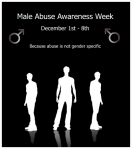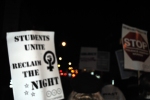Posted by shadowlight and co on January 28, 2010
[tweetmeme source="WeAre_Survivors"]
1. PHYSICAL ABUSE
– any unwanted physcial attention
– kicking, punching, pushing, pulling, slapping, hitting, shaking
– cutting, burning
– pulling hair
– squeezing hand, twisting arm
– choking, smothering
– throwing “victim”, or throwing things at “victim”
– restraining, tying “victim” up
– forced feeding
– hitting “victim” with objects
– threatening to kill or injure “victim”
– ignoring “victim’s” illness or injury
– hiding necessary needs
– pressuring or tricking “victim” into something unwanted
– standing too close or using intimidation
– making or carrying out threats to hurt “victim”
– smashing things
– display of weapons as a means of intimidation
2. SEXUAL VIOLENCE/ABUSE
– any unwanted sexual contact
– forcing “vistim” to have sex, harrassing her for sex
– forcing “victim” to have sex with animals
– uttering threats to obtain sex
– pinching, slapping, grabbing, poking her breasts or genitals
– forcing sex when sick, childbirth or operation
– forcing “victim”to have sex with other men or women
– forcing “victim” to watch or participate in group sex
– knowingly transmitting sexual disease
– treating her as a sex object
– being “rough”
– pressuring “victim” to pose for pornogrpahic phot os
– displaying pornography that makes “vixtim” feel uncomfortable
– using sex as a basis for an argument
– using sex as a solution to an argument
– criticising sexual ability
– unwanted fondling in public
– accusation of affairs
– threatening to have sex with someone else if they don’t give sex
– demanding sex for payment or trade
3. VERBAL / EMOTIONAL / PSYCOLOGICAL ABUSE
– abusing pets
– verbal threats
– playing “mind games”
– making victim think she/he is stupid, or crazy
– humiliating “victim”
– overpowering “victim’s” emotions
– bringing up past issues
– inappropriate expression of jealousy
– degrading “victim”
– putting “victim” down
– blame the “victim” for things
– turning the situation against the “victim”
– laughing in “victim’s” face
– silence, ignoring “victim”
– refusing to do things with or for “victim”
– always getting own way
– neglecting “victim”
– pressuring “victim”
– expecting “victim” to conform to a role
– comparing “victim” to others
– making “victim” feel guilty un-nessisalially
– using certain mannerisms or behaviour as a means of control (eg. snapping fingers, pointing)
– manipulation
– holding grudges and not really forgiving
– threatening to leave or commit suicide
– having double standards for “victim”
– saying one thing and meaning another
– preventing “victim” from getting or taking a job
– minimising or disregarding “victim’s” work or accomplishments
– demanding an account of “victim’s” time/routine
– taking advantage of “victim’s” fear of something
4. SOCIAL ABUSE
– controlling what “victim” does, who “victim” sees, talks to, what “victim” reads and where “victim” goes
– not allowing victim to see or access to family and friends
– change of personality when around others (abuser)
– being rude to “victim’s” friends or family
– dictating “victim’s” dress and behaviour
– choosing “victim’s” friends
– making a “scene” in public
– censoring “victim’s” mail
– treating “victim” like a servant
– not giving victim space or privacy
5. ECONOMIC / FINANCIAL ABUSE
– taking “victim’s” money
– withholding money
– not allowing “victim” money
– keeping family finances a secret
– spending money foolishly
– not paying fair share of bills
– not spending money of special occasions when able (birthdays etc)
– Conning “victim” out of money
– not letting “victim” have access to family income
6. SPIRITUAL / RELIGIOUS ABUSE
– using scripture to justify or dominance
– using church position to pressure for sex or favours
– using “victim”, then demanding forgiveness
– interpresting religion or scripture your way
– preventing victim from attending church
– mocking victim’s belief’s
Posted in abuse, child abuse, ecconomic abuse, emotional abuse, physical abuse, prostitution, psychological abuse, rape, sexual abuse, social abuse, spiritual abuse, trauma, verbal abuse | Tagged: abuse, child abuse, ecconomic abuse, emotional abuse, physical abuse, prostitution, psychological abuse, rape, sexual abuse, social abuse, spiritual abuse, trauma, verbal abuse | 1 Comment »
Posted by shadowlight and co on February 17, 2011
While there is an extensive international literature on domestic violence in heterosexual relationships (Hester, 2004; Hester et al., 2007), research on domestic violence in same sex relationships has a more recent history and has tended to focus on lesbian relationships (McClennen, 2005). Studies from the US increasingly suggest that prevalence of domestic violence may be similar across same sex and heterosexual relationships, but what differs are help-seeking behaviours (McClennen, 2005).
Samples in research on same sex domestic violence have often been relatively small and purposive, reflecting the experiences of white, middle class, lesbians and gay men who are between the ages of 25-35 years and who are ‘out’ enough to engage with venues that carry and support the surveys being done. As a consequence, rates of incidence and prevalence have varied enormously across the studies. For example, in her review of the American literature, Turrell (2000) found prevalence rates for physical violence in lesbian relationships in the range of 8-69%; for sexual violence a range of 5-50%; and for emotional violence a range of 65-90%. By contrast the prevalence of physical violence in gay male relationships was in the range of 11-47% (Turrell, 2000). Waldner-Haugrud and colleagues (1997) found rates of physical violence of 47.5% in lesbian relationships and 29.7% in gay male relationships.
- Domestic violence and abuse is just as common in same sex relationships as it is in mixed sex relationships.
- At least 1 in 4 LGBT people have experienced domestic violence in their relationships and from members of their families.
- Lesbians fleeing an abusive partner often encounter homophobia in women’s refuges, whilst gay men fleeing violence often do not have access to refuge accomodation (for example in the UK only 18 beds are available for the whole of England)
- According to the SIGMA research (2000) same-sex domestic violence not only exists but has been experienced by 22% of Lesbian and Bisexual women and 29% of Gay and Bisexual men (Link)
Useful sites
Broken Rainbow – http://www.broken-rainbow.org.uk/
Stonewall – http://www.stonewall.org.uk/
Borderland Blues – http://borderlandblues.com/
Posted in abuse, broken rainbow, domestic abuse, emotional abuse, female abuser, homosexual relationship, male abuse, Male rape, male victim, marital rape, physical abuse, PTSD, rape, sexual abuse, social abuse, statistics, Stonewall, verbal abuse | Leave a Comment »
Posted by shadowlight and co on December 9, 2010
There is a cultural bias which maintains that males cannot be victims. Males are expected to be confident, knowledgeable, and aggressive. When boys are victimized, they tend to be blamed more for their abuse and are viewed as less in need of care and support, than girls who are abused.
,
Types of male abuse, facts and statistics
– At least 41 percent of the victims of domestic violence are men. (Harvey P. Forehand)
– As many as 1 in 5 males will be sexually abused before the age of 18. And one in five of adult rape victims are male. (Federal Bureau of Investigation in the US, or FBI)
– One in six men will be a victim of domestic abuse in their lifetime. (The British Crime Survey 2006/07 figures)
– Same-sex batterers use forms of abuse similar to those of heterosexual batterers. They have an additional weapon in the threat of “outing” their partner to family, friends, employers or community. (Lundy, Abuse That Dare Not Speak Its Name: Assisting Victims of Lesbian and Gay Domestic Violence in Massachusetts, 28 New Eng. L. Rev. 273 (Winter 1993)
– women who abuse men tend to prefer forms of abuse that don’t involve physical violence. The hurt, the injury caused by the habitual use of vicious mockery, frequent emotional blackmail, spreading odious lies and so on aren’t visible. (Harvey P. Forehand)
– Male Sexual Harassment in the Work Place on the Rise; According to a report by the Equal Employment Opportunity Commission there were a record amount of harassment complaints filed by men in 2006. The figures given in the report state that of the 12,025 sexual harassment claims made in 2006 15.4 percent of these claims came from men. This shows a significant increase of male harassment cases made in the last ten years of 4.5. ([link])
– Munchausen by Proxy is when someone is causing illness or injury in another to obtain attention; usually by a parent or caregiver against a child (in 85% of cases the child is male) ([link])
;
Useful websites and books
Why men do not disclose – [link]
ManKind (chariity supporting male victims of abuse) – [link]
M-Power – [link]
Abused Boys: The Neglected Victims of Sexual Abuse – by Mic Hunter
Victims No Longer: Men Recovering from Incest and Other Sexual Child Abuse – by Mike Lew
The House On Telegraph Hill (An Asylum): Growing Up with Abusive Parents and a Lifetime After – by Charles S. Wilson

Posted in abuse, child abuse, domestic abuse, female abuser, male abuse, Male rape, Male Sexual Harassment, male victim, physical abuse, statistics | Tagged: abuse, child abuse, domestic abuse, female abuser, male abuse, Male rape, Male Sexual Harassment, male victim, physical abuse, statistics | 1 Comment »
Posted by shadowlight and co on December 7, 2010
Child Pornography:
Child pornography refers to images or films (also known as child abuse images) and in some cases writings depicting sexually explicit activities involving a child; as such, child pornography is a record of child sexual abuse. Abuse of the child occurs during the sexual acts which are recorded in the production of child pornography, and the effects of the abuse on the child (and continuing into maturity) are compounded by the wide distribution and lasting availability of photographs of the abuse.
Children of all ages, including infants, are abused in the production of pornography. The United States Department of Justice estimates that pornographers have recorded the abuse of more than one million children in the United States alone
Rape Pornography:
Rape pornography is a genre of pornography involving the depiction of rape.
It was announced on August 30, 2006 that possession of depictions of rape would become a criminal offence in England and Wales. However, the resultant law on “extreme pornography” did not explicitly specify depictions of rape. In September 2008, it was announced that Scotland planned to criminalise possession of “extreme” pornography, extending the list of banned material beyond that in England and Wales to include depictions of rape, and “other non-consensual penetrative sexual activity, whether violent or otherwise.
Extreme Pornography:
Extreme porn depicts acts of incest, beatiality, violence and other illegal or abusive acts. Often the filming/photographing of this involves the forcing of people to commit these acts under threats of violence or other acts of cohersion
Posted in abuse, abusive porn, child abuse, porn, pornography, rape | Tagged: abuse, abusive porn, child abuse, porn, pornography, rape | Leave a Comment »
Posted by shadowlight and co on November 29, 2010
3 suicides in less than 3 weeks of young women, who said they had been sexually assaulted, all of whom turned to systems for help, and were let down.
The first was 14 year-old Samantha Kelly in Detroit, who took her own life, after class mates accused her of lying about the assault. She had reported an 18 year old fellow student of raping her, and her mother had been interviewed on TV – thereby revealing her identity to others in her school. She started to be harassed in person and online, and malicious facebook pages started to pop up about her (even now after her death some are appearing). The case has now been dismissed as they say that without her testimony a conviction would not be possible.
The second was 19-year-old Elizabeth Seeberg, a freshman at St. Mary’s College in Indiana. The assault reportedly happened inside a dorm room August 31. She reported it to police the next day and Elizabeth Seeberg was interviewed by police. Elizabeth Seeberg provided two written statements and pointed out the football player.
Thirdly was Beatrice Delgado, a 17-year old, who committed suicide after reporting that she had been sexually assaulted. The girl, who reported that she had been “tied up, beaten and raped” initially sought medical treatment but then asked to be taken home instead, saying that she felt traumatized and didn’t want to face the medical exam alone. There, she hanged herself in the garage.
.
.
.
This year seems to have been full of things like this… The most obvious of which was the spait of LGBT suicides now long ago.
.
Where are the support systems that are meant to be there to help people in these siturations? Doesn’t it just seem like these people were all failed by those that they reached out to? Should schools have most awareness of these issues?
I personally believe that there should be lessons on sexualitiy, sexual assualt/rape, and abuse in schools. But then again I am one of these peopel who think that most cases of bullying and such are caused by misnderstanding and ignorance and so that education will fix it. Maybe though sme people would bully others and accuse people of being liers regardless.
.
.
All in all, not really been a great year for our cause
Posted in Acquaintance Rape, rape, sexual assualt, suicide | Tagged: Acquaintance Rape, rape, sexual assualt, suicide | 1 Comment »
Posted by shadowlight and co on November 28, 2010
Thousands of women from all over the UK and the rest of Europe will be travelling to London to attend the 7th Reclaim the Night march on Saturday 27th November 2010. Be one of them!
-Reclaim the nights website – http://www.reclaimthenight.org/
In Britain, it is estimated that one in two women will experience domestic violence, sexual assault or stalking during their lifetime, and rape convictions are at an all-time low – just 5.6% of all reported rapes end in a conviction. Every week, two women die at the hands of a former or current partner and new cases of child sexual abuse are reported weekly.And the idea that women should protect themselves by staying inside after dark seems to carry as much weight as ever. Recent coverage about women being “irresponsible” if they drink to excess and then report rape has given the distinct impression that the streets are only safe for very well-behaved, sober women, and then only if they venture out in daylight hours. Police still routinely warn women to “be careful” when out late at night, an approach that puts the onus on women to protect themselves, rather than pinpointing their would-be attackers.
In the summer a U.K. study revieled that a significant number of people thought that rape victims were at least partially to blame for their attacks. The various reasons that respondents blamed women for were the unsurprising — if she had been drinking, if she had worn something revealing, if she had engaged in some other kind of sexual contact with the rapist, etc. — but no less disturbing than they’ve always been.
In 2009 there was a 15% in reports of vioelce against women, and in 2008 there was a 8% rise in rapes. These are the only 2 crimes to have increased in number ove rthe last few years.
And now for some pictures of tonights event from our friends over at shadow light photography:
Posted in abuse, bystander apathy, domestic abuse, rape, reclaim the night, sex trafficking, sexual abuse, sexual assualt | Tagged: abuse, bystander apathy, domestic abuse, rape, reclaim the night, sex trafficking, sexual abuse, sexual assualt | 1 Comment »
Posted by shadowlight and co on October 7, 2010
[tweetmeme source=”WeAre_Survivors”]

On the 5th of December I am going to be running 5km through London in a santa suit!!!
why am I doing this you ask? Well I am doing it to raise money for charity 😀
I’m aiming to raise £150 for the charity War Child (War Child is an international charity that works with children affected by war in Afghanistan, Iraq, Democratic Republic of Congo and Uganda).
.
DID YOU KNOW THAT: the development of lighter weapons – such as the AK47 – means that boys as young as eight can be armed?
DID YOU KNOW THAT: The number of children under the age of 18 who have been coerced or induced to take up arms as child soldiers is generally thought to be in the range of 300,000?
DID YOU KNOW THAT: The youngest child soldiers are about 7 years old?
DID YOU KNOW THAT: Over 50 countries currently recruit children under age 18 into their armed forces?
DID YOU KNOW THAT: Forcible abductions, sometimes of large numbers of children, continue to occur in some countries?
DID YOU KNOW THAT: Children as young as nine have been abducted and used in combat?
Please sponcer me
Posted in Uncategorized | Leave a Comment »
Posted by shadowlight and co on August 4, 2010
[tweetmeme source=”WeAre_Survivors”]
Drug-facilitated sexual assault involves the administration of an anesthesia-type drug to render a victim physically incapacitated or helpless and thus incapable of giving or withholding consent. Victims may be unconscious during all or parts of the sexual assault and, upon regaining consciousness, may experience anterograde amnesia—the inability to recall events that occurred while under the influence of the drug.
There are no conclusive estimates as to the number of drug-facilitated sexual assaults that occur each year; however, nationwide law enforcement reporting indicates that the number of such assaults appears to be increasing. Many drug-facilitated sexual assaults are not reported. Victims often are reluctant to report incidents because of a sense of embarrassment, guilt, or perceived responsibility, or because they lack specific recall of the assault. Moreover, most of the drugs typically used in the commission of sexual assaults are rapidly absorbed and metabolized by the body, thereby rendering them undetectable in routine urine and blood drug screenings.
 Please sign our petition
Please sign our petition
Posted in Acquaintance Rape, rape, sexual assualt | Tagged: Acquaintance Rape, rape, sexual assualt | Leave a Comment »
Posted by shadowlight and co on July 20, 2010
[tweetmeme source=”WeAre_Survivors”]
Not only women are victims of Domestic Abuse. Men can be, and frequently are, also victims of abuse in the home, either at the hands of their female or, in the case of same-sex relationships, their male partner. Abuse is a control issue – abusers believe they have the right to manipulate, control and humilate another person, and this belief is not only held by some men but also by some women.
Every year, 1,510,455 women and 834,732 men are victims of physical violence by an intimate. This is according to a Nov. 1998 Department of Justice report on the National Violence Against Women Survey. What does that mean?
Every 37.8 seconds a man is beaten. The data show that men are more likely to have a knife used on them or to be threatened with a knife, hit with an object, kicked, bitten or have something thrown at them.
Domestic violence is: Any incident or threatening behaviour, violence or abuse (psychological, physical, sexual, financial or emotional) between adults who are or have been intimate partners or are family members, regardless of gender or sexuality.

Posted in abuse, male victim, misconseptions, myths, physical abuse, post traumatic stress disorder, psychological abuse, PTSD, sexual abuse, sexual assualt, social abuse, spousal abuse, trauma, verbal abuse | Tagged: abuse, male victim, misconseptions, myths, physical abuse, post traumatic stress disorder, psychological abuse, PTSD, sexual abuse, sexual assualt, social abuse, spousal abuse, trauma, verbal abuse | Leave a Comment »
Posted by shadowlight and co on June 9, 2010
[tweetmeme source=”WeAre_Survivors”]
Vaginismus is a sexual disorder that is characterized by the outer third of the vaginal muscles tightening, often painfully. A woman with vaginismus does not willfully or intentionally contract her vaginal muscles. However, when the vagina is going to be penetrated, the muscles tighten spontaneously due to psychological or other reasons.
Vaginismus can occur under different circumstances. It can begin the first time vaginal penetration is attempted. This is known as “lifelong vaginismus.” Alternately, vaginismus can begin after a period of normal sexual functioning. This is known as “acquired-type vaginismus”. For some women, vaginal tightening occurs in all situations where vaginal penetration is attempted (generalised type). For other women, it occurs in only one or a few situations, such as during a gynecological examination at the doctor’s office, or with a specific sex partner.
Causes
There are many possible causes of vaginismus. One example is an upbringing in which sex was considered wrong or sinful—as in the case of some strict religious backgrounds. This is common among women with this disorder. Concern that penetration is going to be painful, such as during a first sexual experience, is another possible cause. It is also thought that women who feel threatened or powerless in their relationship may subconsciously use this tightening of the vaginal muscles as a defense or silent objection to the relationship. A traumatic childhood experience, such as sexual molestation, is thought to be a possible cause of vaginismus and acquired-type vaginismus is often the result of sexual assault or rape.
Symptoms
Vaginismus can occur when any kind of penetration of the vagina is attempted. This includes attempted penetration by a penis, speculum, tampon, or other objects. The outer third of the vaginal muscles contract severely. This either prevents penetration completely, or makes it difficult and painful. The woman may truly believe that she wants to have sexual intercourse or allow the penetration, but that her subconscious desires or decisions do not allow her to relax the vaginal muscles.
Treatment – Psychotherapy
There are three settings in which psychological treatment can occur. These are in individual, couple, or group settings. During individual therapy, the treatment focuses on identifying and resolving any underlying psychological problems that could be causing the disorder. Problems stemming from issues such as childhood trauma or rape are often resolved this way. Revealing insecurities or fears about sex resulting from such things as parents’ attitudes about it, or a religious upbringing, can often be discussed successfully if the affected woman can trust her therapist.
Couples therapy is often used as treatment for sexual disorders, the idea behind couples therapy is that any sexual problem should be treated as a problem for the couple as a whole, and not just addressed as a problem for one person. Because this view is taken, the therapist interacts with the patients both separately and as a couple. The therapist addresses both the couple’s sexual history and any other problems that may be occurring in the relationship. Confronting these problems may help to resolve the cause of the vaginismus. Working with a therapist on relationship problems can be very effective— perhaps especially so if the vaginismus is caused by a subconscious use of vaginal muscle spasms as a nonverbal form of protest about one or more aspects of the relationship. The couple is educated about vaginismus disorder and given advice on the kind of activities that can be engaged in at home that may be helpful in overcoming the disorder.
Group therapy, which can be very effective, is another form of therapy for vaginismus. In this form of therapy, couples or individuals who have the same or similar sexual disorders are brought together. For people who are embarrassed or ashamed of their disorder, this setting can provide comfort and strength. It is often very beneficial to witness another person discussing sex and sexual problems in an open and honest forum. It can also help to inspire patients to become more open and honest themselves
Posted in abuse, child abuse, CSA, incest, marital rape, rape, sexual abuse, sexual assualt, sexual disorder, Vaginismus | Tagged: abuse, child abuse, CSA, incest, marital rape, rape, sexual abuse, sexual assualt, sexual disorder, Vaginismus | Leave a Comment »
Posted by shadowlight and co on June 2, 2010
[tweetmeme source=”WeAre_Survivors”]
Domestic violence
Domestic violence refers to the physical, emotional, and sexual abuse of a spouse or domestic partner (regardless of gender). Early research into the problem of wife battering focused on middle-class couples, but it has since been recognised that spouse abuse occurs among wealthy professional couples as well. In addition, studies done in the late 1980s and 1990s indicate that domestic violence also occurs among gay and lesbian couples. It is estimated that four million women in the United States are involved in abusive marriages or relationships; moreover, most female murder victims are killed by their spouse or partner rather than by strangers.
Domestic violence illustrates the tendency of abusive people to attack anyone they perceive as vulnerable; most men who batter women also abuse their children; some battered women abuse their children; and abusive humans are frequently cruel to animals.
Elder abuse
Elder abuse has become a subject of national concern in the last two decades. As older adults are living longer, many become dependent for years on adult caregivers, who may be either their own adult children or nursing home personnel. Care of the elderly can be extremely stressful, especially if the older adult is suffering from dementia. Elder abuse may include physical hitting or slapping; withholding their food or medications; tying them to their chair or bed; neglecting to bathe them or help them to the toilet; taking their personal possessions, including money or property; and restricting or cutting off their contacts with friends and relatives.
Abusive professional relationships
Adults can also be abused by sexually exploitative doctors, therapists, clergy, and other helping professionals. Although instances of this type of abuse were dismissed prior to the 1980s as consensual participation in sexual activity, most professionals now recognize that these cases actually reflect the practitioner’s abuse of social and educational power. About 85% of sexual abuse cases in the professions involve male practitioners and female clients; another 12% involve male practitioners and male clients; and the remaining 3% involve female practitioners and either male or female clients. The victims of many of these abusive relationships are men and women who sought professional help in order to deal with the effects of childhood abuse.
Workplace bullying
Workplace bullying is, like stalking, increasingly recognized as interpersonal abuse. It should not be confused with sexual harassment or racial discrimination. Workplace bullying refers to verbal abuse of other workers, interfering with their work, withholding the equipment or other resources they need to do their job, or invading their personal space, including touching them in a controlling manner. Half of all workplace bullies are women, and the majority (81%) are bosses or supervisors.
Stalking
Stalking is the repeated pursuit or surveillance of another person by physical or electronic means. Many cases of stalking are extensions of domestic violence, in that the stalker is attempting to track down a wife or girlfriend who left him. However, stalkers may also be casual acquaintances, workplace colleagues, or even total strangers. Stalking may include a number of criminal or abusive behaviors, including forced entry to the person’s home, destruction of cars or other personal property, anonymous letters to the person’s friends or employer, or repeated phone calls, letters, or e-mails. About 80% of stalking cases reported to police involve men stalking women.
Posted in abuse, Abusive professional relationships, bullying, crime, domestic abuse, ecconomic abuse, economic abuse, Elder abuse, emotional abuse, female abuser, financial abuse, interpersonal abuse, marital rape, rape, social abuse, spousal abuse, Stalking, Workplace bullying | Tagged: abuse, Abusive professional relationships, bullying, crime, domestic abuse, ecconomic abuse, economic abuse, Elder abuse, emotional abuse, female abuser, financial abuse, interpersonal abuse, marital rape, rape, social abuse, spousal abuse, Stalking, Workplace bullying | 1 Comment »











.png)






















 Please sign our petition
Please sign our petition